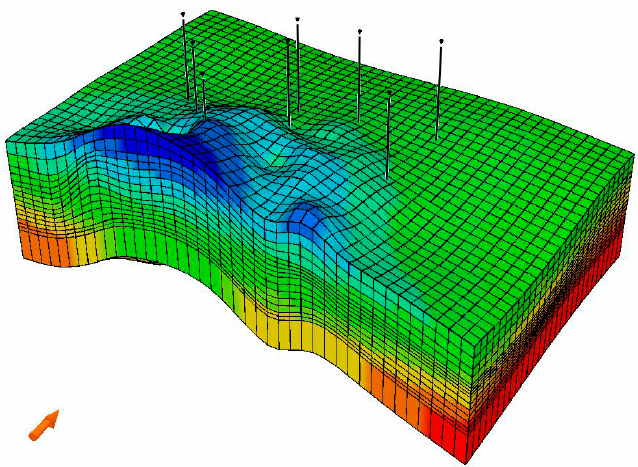𝗥𝗲𝘀𝗲𝗿𝘃𝗼𝗶𝗿 𝗣𝗿𝗼𝗽𝗲𝗿𝘁𝘆 𝗧𝗿𝗲𝗻𝗱 𝗠𝗼𝗱𝗲𝗹𝗶𝗻𝗴 𝗪𝗼𝗿𝗸𝗳𝗹𝗼𝘄: Developing an accurate property trend modeling workflow is a complex process that requires a well-defined roadmap. Let's delve into the key steps involved in this workflow.
1. Data Collection and Analysis: The first step is gathering the necessary input data, including well logs, core samples, seismic data, and production history. This data is then thoroughly analyzed to identify trends, correlations, and patterns that can help in characterizing the reservoir's properties.
2. Data Conditioning and Preprocessing: The collected data often requires conditioning and preprocessing to address any inconsistencies, errors, or missing information. This step ensures that the data used for property trend modeling is reliable and accurate.
3. Geostatistical Analysis: Geostatistics plays a vital role in property trend modeling. It involves analyzing spatial relationships in the data and applying statistical techniques to model the variability of the reservoir properties. Geostatistical tools, such as kriging, variograms, and co-kriging, are used to create a stochastic model that represents the distribution of properties across the reservoir.
4. Trend Identification: Once the stochastic model is established, the next step is identifying and capturing the trends within the reservoir. Trends may include structural trends, stratigraphic patterns, or any other significant geological features that influence property distribution. This step helps in creating a realistic representation of the reservoir's characteristics.
5. Property Trend Modeling: Based on the identified trends, the property trend model is developed by integrating the stochastic model with the geologic information. This model predicts the properties, such as porosity, permeability, and saturation, at unsampled locations within the reservoir.
6. Model Validation: To ensure the accuracy of the property trend model, it is crucial to validate it against independent data or well-test results. This step helps in assessing the model's reliability and making any necessary adjustments or refinements.
7. Uncertainty Analysis: Uncertainty analysis is performed to quantify the uncertainties associated with the property trend model. This step assists in understanding the range of potential outcomes and facilitates decision-making under uncertainty.

